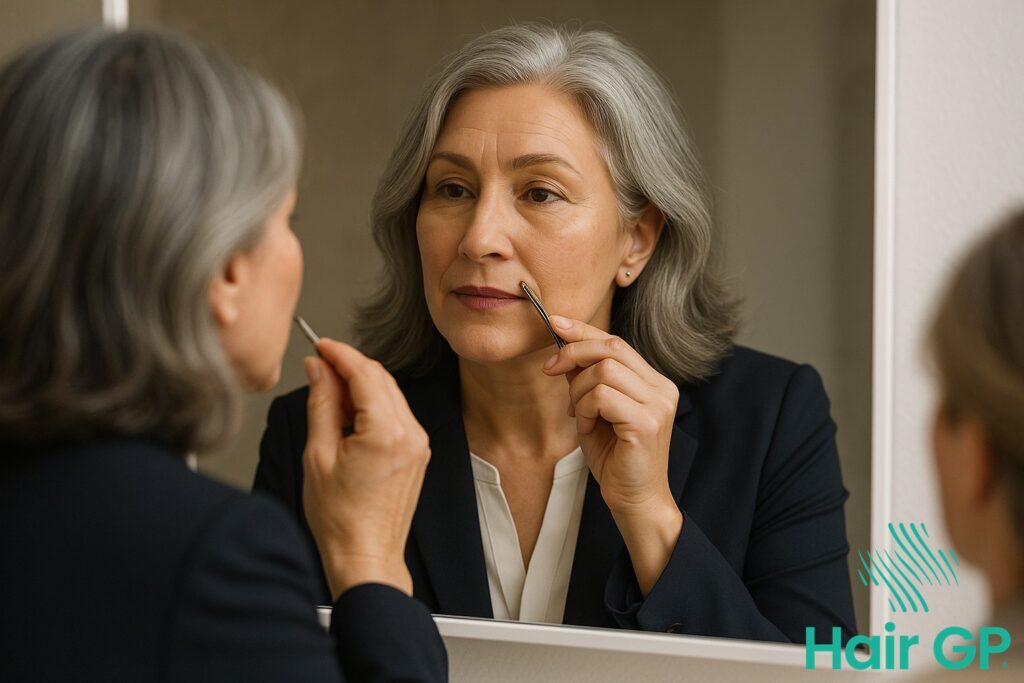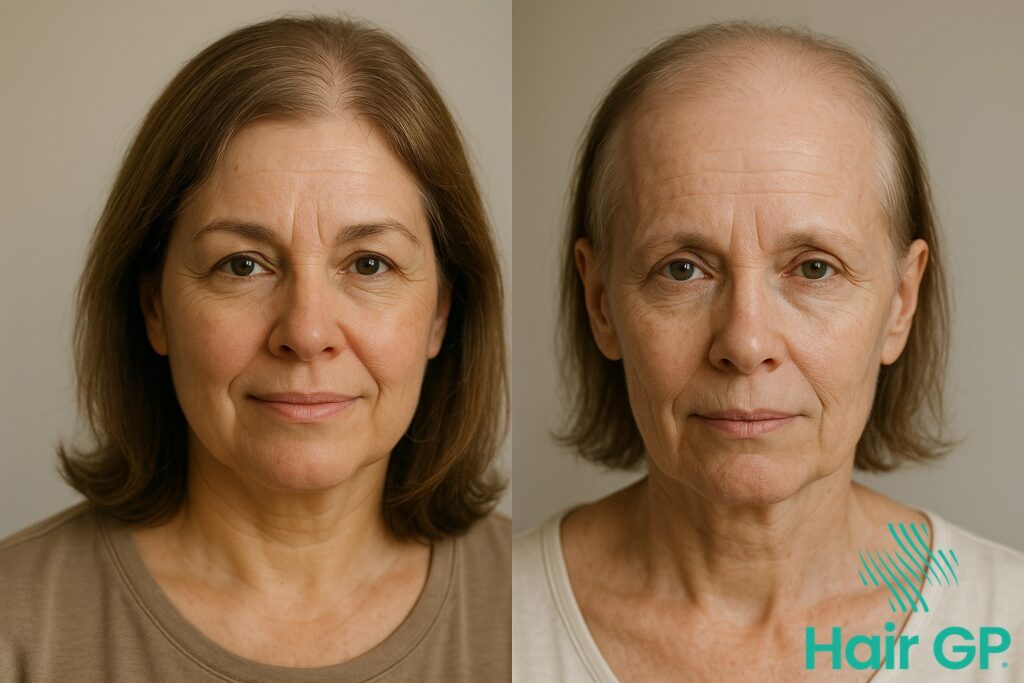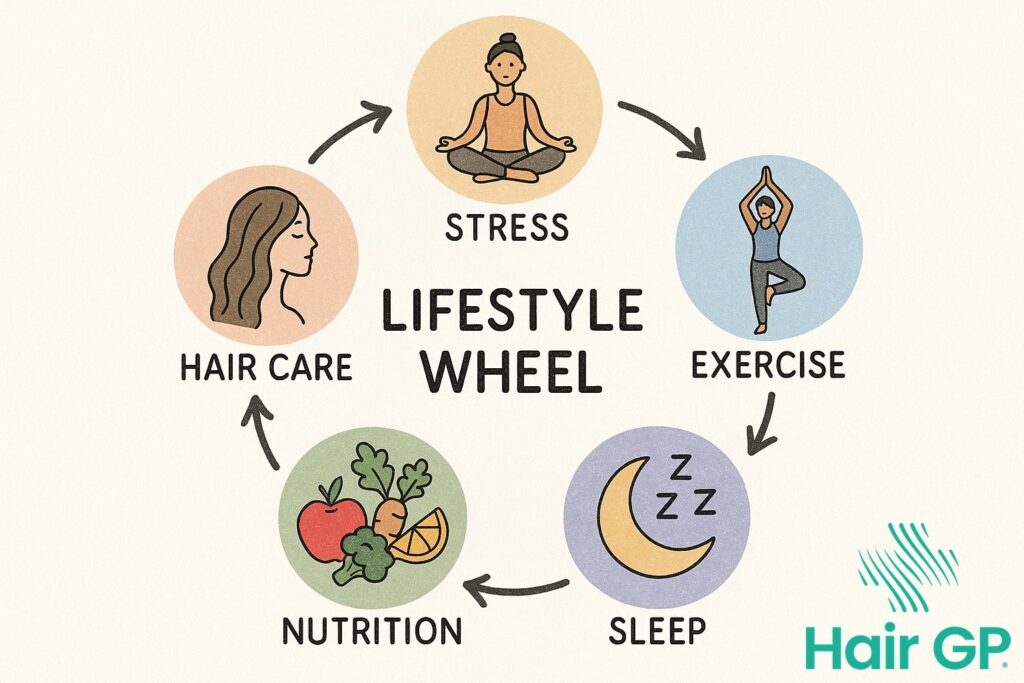Introduction
Many women notice increased facial hair after menopause, a change that can feel unexpected and concerning. This common experience affects millions of women as hormones shift during this natural stage of aging. Whilst society rarely discusses unwanted facial hair growth openly, it’s a completely normal part of the menopausal transition that deserves understanding and practical solutions.
This comprehensive guide explores why facial hair increases during menopause, examining the hormonal changes responsible for new growth patterns. We’ll identify the different types of hair that may appear and the areas most commonly affected. You’ll discover various removal methods, from temporary solutions to permanent treatments, helping you choose what works best for your needs. Finally, we’ll discuss when excessive hair growth warrants medical attention, ensuring you recognise signs that may indicate underlying conditions.
Key Takeaways – TL/DR
- Hormonal changes during menopause, particularly declining oestrogen and relative androgen dominance, cause increased facial hair growth
- Most menopausal facial hair is normal, but excessive growth (hirsutism) may require medical evaluation
- Multiple effective hair removal options exist, from temporary methods like shaving to permanent solutions like laser hair removal
- Managing facial hair is part of overall menopausal care alongside other symptoms like hot flashes and hair loss
Why Does Facial Hair Increase After Menopause?
During menopause, significant shifts in hormone levels create conditions favouring facial hair growth. Oestrogen production by the ovaries decreases dramatically, falling to approximately 10% of premenopausal levels [1]. This decline disrupts the delicate balance between female and male hormones that previously kept facial hair growth minimal.
Whilst oestrogen plummets, androgens like testosterone remain relatively stable or decline more gradually. This creates a state of relative androgen dominance, where male hormones exert stronger effects despite not actually increasing [2]. The changed androgen to oestrogen ratio allows testosterone and other androgens to stimulate hair follicles on the face more effectively, particularly around the chin, upper lip, and jawline.
Hair follicles contain androgen receptors that respond to circulating testosterone by producing thicker, darker terminal hairs instead of fine vellus hairs. Without sufficient oestrogen to counterbalance these effects, androgens trigger increased hair growth in typically male patterns. Additionally, some women experience slight increases in free testosterone levels during menopause as sex hormone-binding globulin decreases, further contributing to unwanted facial hair development. Understanding these hormonal mechanisms helps normalise this common menopausal change.
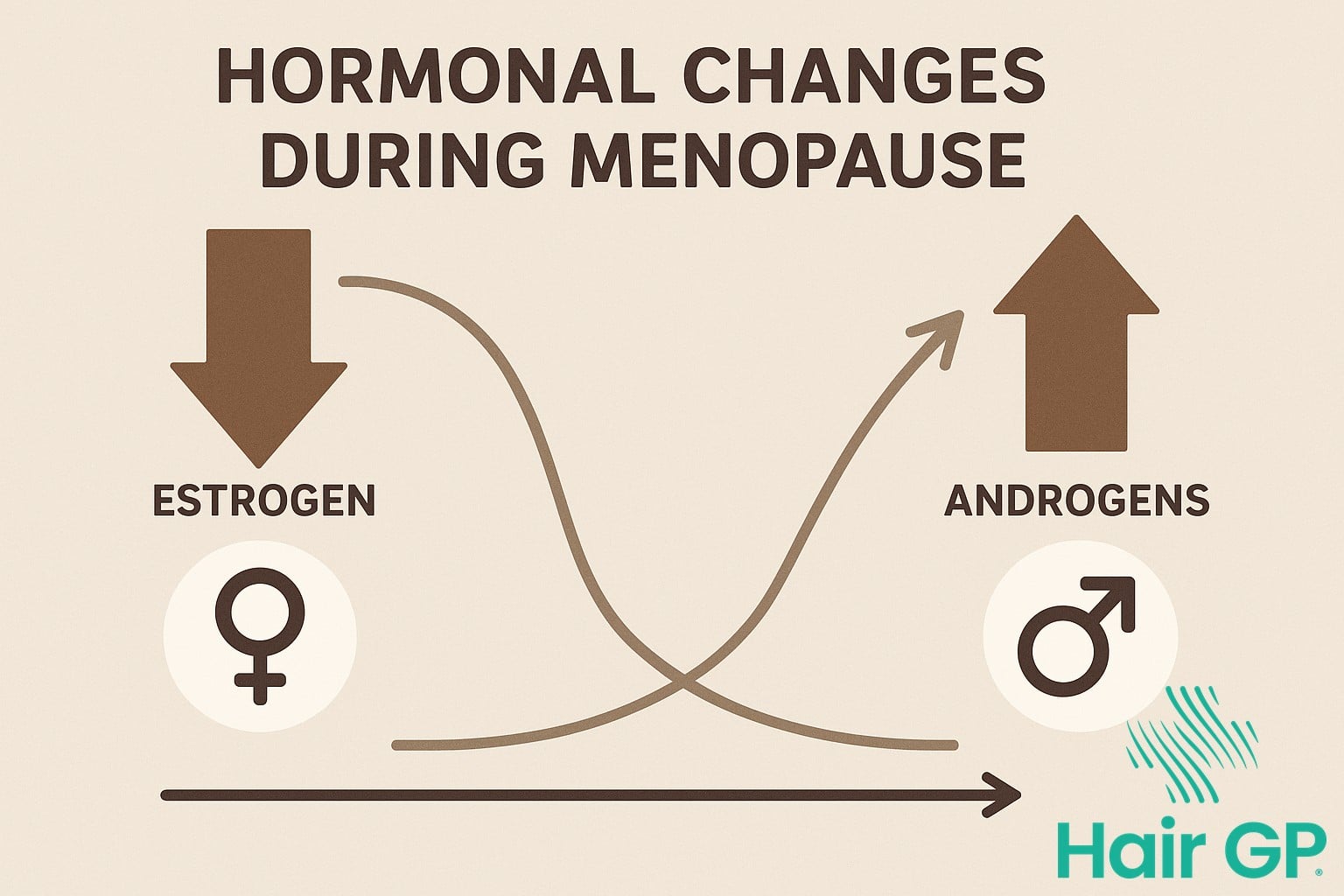
Types of Facial Hair Growth During Menopause
Understanding the different types of facial hair helps women recognise what’s happening during menopause. Vellus hair, commonly known as peach fuzz, is the fine, light-coloured hair that normally covers most of the face. This soft, barely visible hair has always been there, helping regulate body temperature and protecting skin.
During menopause, hormonal changes can transform vellus hair into terminal hair – the thicker, coarser, and darker type typically found on the scalp and eyebrows. Each hair follicle responds individually to shifting hormones, which explains why some women develop scattered dark hairs on the chin or upper lip whilst others notice more widespread changes.
Most menopausal women experience some increase in facial hair, particularly on the chin, upper lip, and jawline. Whilst a few coarse hairs are completely normal, excessive hair growth covering large areas or appearing suddenly warrants discussion with a healthcare provider to rule out underlying concerns.
Common Areas Affected by Menopausal Facial Hair
During menopause, facial hair tends to appear in predictable areas, and knowing you’re not alone in this experience can provide reassurance. The upper lip is often the first place women notice changes, with fine hair becoming darker or more noticeable. The chin frequently develops thicker, coarser hairs, sometimes appearing as that odd stray hair that seems to emerge overnight. Along the jawline, particularly near the corners of the jaw, new growth may appear where smooth skin once existed.
These specific areas of the face respond most readily to hormonal changes because they contain more androgen-sensitive hair follicles. The cheeks may also develop fine, downy hair that becomes more visible with age. Upper lip hair often starts as a subtle darkening before becoming more pronounced. Understanding these common patterns helps normalise the experience and guides effective treatment approaches tailored to each area’s unique characteristics.
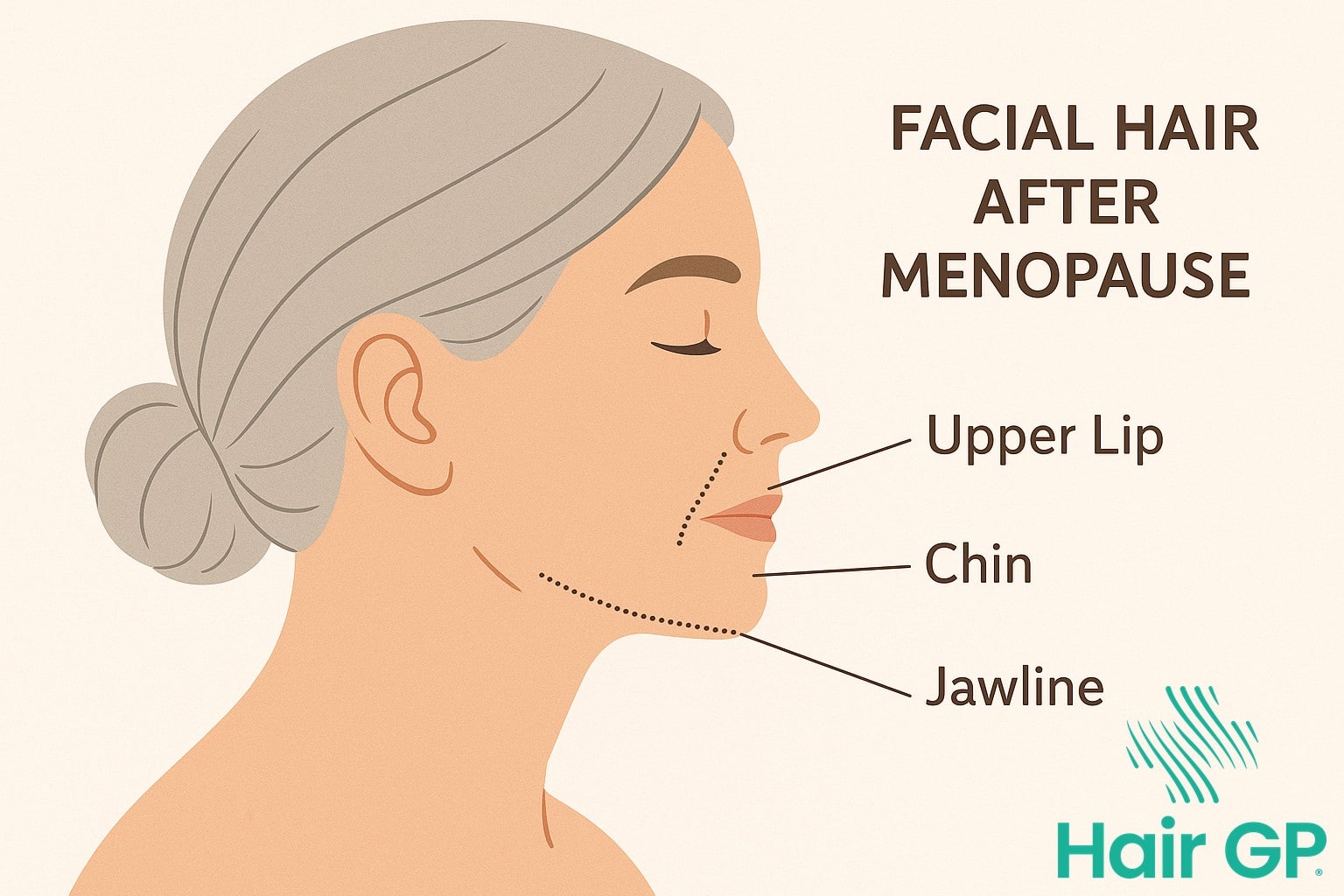
Hair Removal Options for Menopausal Women
Managing unwanted facial hair during menopause requires understanding available removal options and their effectiveness. From temporary solutions to permanent treatments, choosing the right method depends on individual preferences, budget, and skin sensitivity.
Temporary Hair Removal Methods
Cost-effective temporary options provide immediate results but require regular maintenance. Shaving remains the quickest method, though hair regrows within days. Waxing pulls hair from the root, lasting 3-6 weeks but may cause discomfort. Hair removal creams dissolve hair at skin level, offering painless removal lasting up to a week. Tweezing works well for isolated hairs but proves time-consuming for larger areas.
Permanent Hair Removal Solutions
Laser hair removal targets hair follicles with light energy, reducing growth by 70-90% after multiple sessions [3]. Whilst requiring higher initial investment and professional treatment, results last years. Electrolysis destroys individual follicles using electrical current, providing the only FDA-approved permanent removal method [4]. Both treatments work best on darker hair against lighter skin.
Preventing and Treating Ingrown Hairs
Proper technique prevents ingrown hairs regardless of removal method. Regular exfoliation removes dead skin cells that trap emerging hairs. When shaving, use sharp razors and shave in hair growth direction. After any hair removal, apply fragrance-free moisturiser to soothe skin. For persistent ingrown hairs, use salicylic acid treatments to gently exfoliate affected areas. Always remove facial hair gently to minimise irritation and scarring.
When to See a Doctor About Excessive Hair Growth
Whilst some facial hair growth is normal during perimenopause, certain patterns warrant medical evaluation. Hirsutism, defined as excessive hair growth in male-pattern areas, affects approximately 5-10% of women and requires professional assessment when accompanied by other symptoms[5]. The modified Ferriman-Gallwey score helps clinicians evaluate the severity of unwanted hair growth across nine body areas[6].
Seek medical attention if you notice rapid onset of coarse hair on the face, chest, or abdomen, particularly alongside irregular periods, weight gain, or voice deepening. These symptoms may indicate underlying hormonal conditions like polycystic ovary syndrome or androgen-secreting tumours. Women who’ve reached menopause experiencing sudden excessive hair growth should consult their GP promptly, as post-menopausal hirsutism requires investigation to rule out serious conditions. Your doctor can perform blood tests to assess hormone levels and determine whether treatment is necessary.
Conclusion
Managing facial hair after menopause is a common concern for many women navigating this natural phase of aging. The increased hair growth during menopause results from hormonal changes that affect every woman differently. Whether you choose temporary hair removal methods or explore permanent solutions, remember that unwanted facial hair is entirely normal and manageable. Understanding the causes empowers you to make informed decisions about treatment options. As you continue your menopause journey, take comfort in knowing that effective solutions exist. Consult healthcare professionals when needed, and choose management strategies that align with your lifestyle and preferences.
Frequently Asked Questions
Yes, it’s completely normal to experience increased facial hair growth after menopause due to hormonal changes, particularly the decline in estrogen and relative increase in androgens.
While you cannot completely prevent hormonal changes, maintaining a healthy lifestyle and discussing hormone therapy options with your doctor may help manage excessive hair growth.
Normal menopausal facial hair is typically fine or limited to a few coarse hairs, while hirsutism involves excessive, male-pattern hair growth and may indicate an underlying hormonal condition.
Facial hair may continue to increase gradually after menopause, but significant sudden changes should be evaluated by a healthcare provider.
References
- Davis SR, Lambrinoudaki I, Lumsden M, et al. Menopause. Nat Rev Dis Primers. 2015;1:15004.
- Burger HG. Androgen production in women. Fertil Steril. 2002;77 Suppl 4:S3-5.
- Gan SD, Graber EM. Laser hair removal: a review. Dermatol Surg. 2013;39(6):823-838.
- Fernandez AA, França K, Chacon AH, Nouri K. From flint razors to lasers: a timeline of hair removal methods. J Cosmet Dermatol. 2013;12(2):153-162.
- Azziz R, Carmina E, Sawaya ME. Idiopathic hirsutism. Endocr Rev. 2000;21(4):347-362.
- Escobar-Morreale HF, Carmina E, Dewailly D, et al. Epidemiology, diagnosis and management of hirsutism: a consensus statement by the Androgen Excess and Polycystic Ovary Syndrome Society. Hum Reprod Update. 2012;18(2):146-170.

